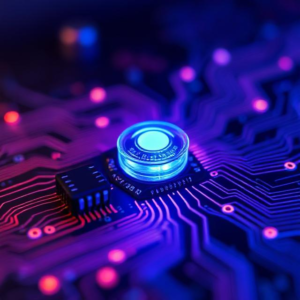What is Telemetry?
Telemetry is the process of collecting data from a remote or far-away location and transmitting that data to a central point where it can be monitored, analyzed, and used. It’s like sending information from one place to another without the need for people to be physically there.
In simple terms, telemetry allows us to gather information from places that are too dangerous, far away, or hard to reach, and send that information back to a place where we can look at it and make decisions based on it.

Key Elements of Telemetry:
- Sensors: These are the devices that collect the data. Sensors can measure things like temperature, pressure, speed, humidity, or even the position of a vehicle.Example: A sensor in a spacecraft can measure its temperature, while a sensor in a car might track its speed.
- Transmitter: After the sensor collects the data, the transmitter sends it to a receiver. The transmitter uses radio waves, satellite signals, or other methods to send the information.Example: A weather satellite uses radio waves to send weather data back to Earth.
- Receiver: This is the device that gets the transmitted data. The receiver is usually at a central location, like a control room or a laboratory, where people can monitor and analyze the data.Example: Meteorologists receive data from satellites to understand weather patterns.
- Data Storage & Analysis: Once the data is received, it’s stored and analyzed. The data can help make decisions, track trends, and improve performance.Example: A space agency receives telemetry data from a satellite, analyzes it, and decides how to adjust the satellite’s path.
Where is Telemetry Used?
- Space Exploration: Spacecraft, rovers, and satellites use telemetry to send back data about their environment, health, and status. This allows mission controllers to monitor and control these spacecraft even though they are millions of kilometers away.Example: NASA uses telemetry to track the health of spacecraft like the Mars rover, sending data about temperature, battery levels, and scientific measurements.
- Medicine: Telemetry is used to monitor patients remotely, especially in hospitals or homes. Medical devices can send data about a patient’s heart rate, blood pressure, or oxygen levels to healthcare professionals.Example: A wearable heart monitor transmits a patient’s heart rate data to doctors, allowing them to monitor the patient’s condition without being physically present.
- Environment Monitoring: Telemetry helps collect environmental data from remote locations, like forests, oceans, or deep underground. This data helps scientists monitor things like pollution, temperature, or animal movements.Example: Environmental organizations use telemetry to track the temperature of oceans or monitor wildlife movements in remote areas.
- Vehicles and Drones: Cars, airplanes, and drones use telemetry to send real-time data about their speed, altitude, fuel levels, engine status, and other vital information to the control center.Example: Airplanes transmit telemetry data to the control tower, allowing pilots and air traffic controllers to monitor the plane’s condition and location.
- Industrial Applications: Factories and power plants use telemetry to monitor machines, equipment, and systems from a distance. This helps detect problems early and improve efficiency.Example: A power plant may use telemetry to monitor the performance of turbines and generators, ensuring they are working correctly and avoiding breakdowns.
How Does Telemetry Work?
- Data Collection: Sensors gather information from the environment (e.g., temperature, pressure, location, etc.).
- Data Transmission: The data is sent using wireless signals (radio, satellite, internet, etc.) to a remote location.
- Data Reception: The information is received by a receiver (like a satellite dish, computer, or specialized antenna).
- Analysis and Action: The received data is analyzed, and decisions are made based on the information. If something is wrong, action can be taken immediately, even from a distance.
Why is Telemetry Important?
- Remote Monitoring: It allows us to monitor things that are far away, dangerous, or hard to access, like space missions, remote weather stations, or hazardous industrial sites.
- Real-Time Data: Telemetry sends data in real-time, allowing quick responses. For example, if a spacecraft’s engine is malfunctioning, telemetry allows engineers to notice the issue right away and make adjustments.
- Safety: In healthcare, telemetry helps doctors monitor patients’ vital signs remotely, which can save lives in emergencies. It also keeps engineers and scientists safe by allowing them to monitor dangerous conditions from a safe distance.
Examples of Telemetry in Everyday Life:
- Cars and Vehicles: Modern cars often have sensors that send telemetry data about engine performance, tire pressure, and fuel levels to service centers, which can alert you when something needs attention.
- Smart Home Devices: Some smart home devices (like thermostats or smoke detectors) use telemetry to send data to your phone or a central system to help you manage your home’s temperature or safety.
- Sports: Telemetry is used to track athletes’ performance, such as their heart rate, speed, and distance traveled, which can help improve training or analyze game performance.
Conclusion
In essence, telemetry is like having eyes and ears in places that are far away or difficult to access. It helps gather data from remote systems, vehicles, or environments, and sends it back for analysis. This technology is essential for space exploration, healthcare, environmental monitoring, and many other fields where real-time data is crucial for making decisions and ensuring safety.











